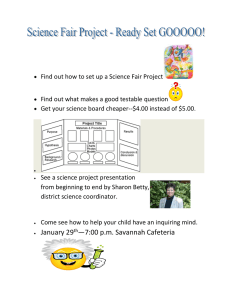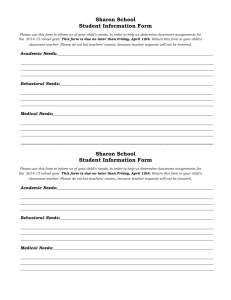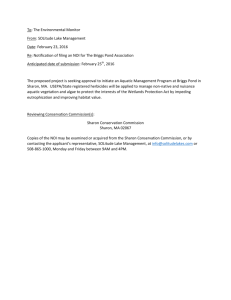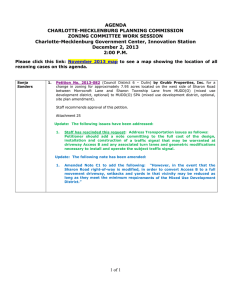Participants: Maria Paz, Tim Figenbaum, Brian Casserly, Maureen Nutting, ... Elinor Appel, Tom Braziunas, Laura Purkey McCracken, Sharon Simes... November 14, 2007 Gen Ed Workgroup: ILTL
advertisement
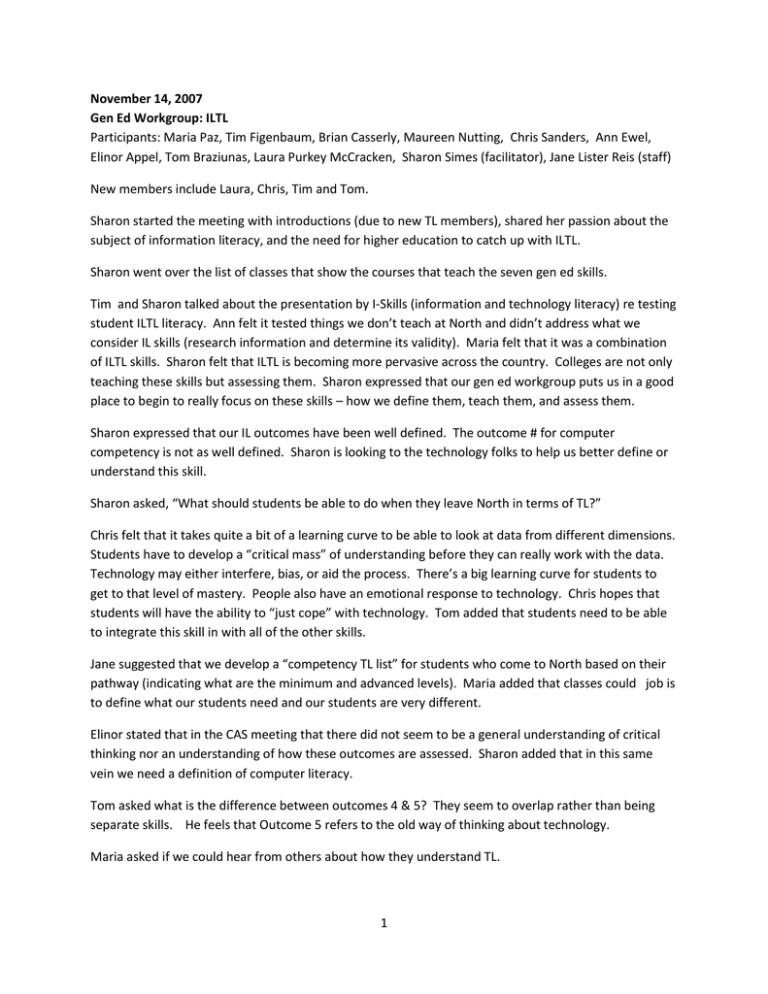
November 14, 2007 Gen Ed Workgroup: ILTL Participants: Maria Paz, Tim Figenbaum, Brian Casserly, Maureen Nutting, Chris Sanders, Ann Ewel, Elinor Appel, Tom Braziunas, Laura Purkey McCracken, Sharon Simes (facilitator), Jane Lister Reis (staff) New members include Laura, Chris, Tim and Tom. Sharon started the meeting with introductions (due to new TL members), shared her passion about the subject of information literacy, and the need for higher education to catch up with ILTL. Sharon went over the list of classes that show the courses that teach the seven gen ed skills. Tim and Sharon talked about the presentation by I-Skills (information and technology literacy) re testing student ILTL literacy. Ann felt it tested things we don’t teach at North and didn’t address what we consider IL skills (research information and determine its validity). Maria felt that it was a combination of ILTL skills. Sharon felt that ILTL is becoming more pervasive across the country. Colleges are not only teaching these skills but assessing them. Sharon expressed that our gen ed workgroup puts us in a good place to begin to really focus on these skills – how we define them, teach them, and assess them. Sharon expressed that our IL outcomes have been well defined. The outcome # for computer competency is not as well defined. Sharon is looking to the technology folks to help us better define or understand this skill. Sharon asked, “What should students be able to do when they leave North in terms of TL?” Chris felt that it takes quite a bit of a learning curve to be able to look at data from different dimensions. Students have to develop a “critical mass” of understanding before they can really work with the data. Technology may either interfere, bias, or aid the process. There’s a big learning curve for students to get to that level of mastery. People also have an emotional response to technology. Chris hopes that students will have the ability to “just cope” with technology. Tom added that students need to be able to integrate this skill in with all of the other skills. Jane suggested that we develop a “competency TL list” for students who come to North based on their pathway (indicating what are the minimum and advanced levels). Maria added that classes could job is to define what our students need and our students are very different. Elinor stated that in the CAS meeting that there did not seem to be a general understanding of critical thinking nor an understanding of how these outcomes are assessed. Sharon added that in this same vein we need a definition of computer literacy. Tom asked what is the difference between outcomes 4 & 5? They seem to overlap rather than being separate skills. He feels that Outcome 5 refers to the old way of thinking about technology. Maria asked if we could hear from others about how they understand TL. 1 Tim believes that our campus lives in an ivory tower. Students find things working. Students go home and there is another world. Students should be able to go home and make there systems work. Therefore outcome #5 should include foundational skills to maintain one’s own system. For example, install an operating system, etc. Chris proposes a model of IL with technology being one of the ways in which information comes in. Technology has made information more apparent (and available). Information comes through a “tool” which is the computer. Chris: list required entry and exit skills. Elinor, “how to write an email, how to use a spreadsheet, etc.” Sharon asked about Educom Review’s article called “Information Literacy as a Liberal Art.” This article covers how we need to perceive technology. We’re trying to squeeze old ways of doing things into a tech world. Their premise is that we need to throw everything out and rethink how we operate. Brian mentioned “mobile learning” (UW) – transmitting information to students through mobile ways. It’s the new frontier. Chris feels that continuing education should be part of this workgroup. Teach people to “play” with Sharon: technology/information is “gooey” – always in flux (like teaching and learning, Maureen). Ann: you need to have foundation/fundamental building blocks. Issue discussed was our students – who they are (and who they aren’t). Many (some?) of them do not have a computer at home. Tim says we have surplus machines that we could give away. However, because of the way the system works, we can’t give them to students. Maria suggested that we change the definition (like the library did for their book sale) so that computers could be given away or sold very cheaply. Tom asked why financial aid couldn’t apply towards a computer. Jane thinks some do. Maureen shared a history course that has an information literacy outcome. The workgroup looked at HIS 111. Gen outcomes are stated in syllabus. Ann and Brian have been working on a information diagnostic in the library. The diagnostic helps determine where students begin in terms of competency. Maureen also shared a citation assignment. Brian shared an assignment that he developed where students must find two primary sources to support what they’re reading. There is also a response sheet when papers are handed in. Students can see from the check marks whether or not their paper is weak or strong. Another diagnostic asks what students learned at the end of the quarter. HIS 112 moves into other areas of information literacy (oral interviews, intellectual copyrights, etc.). Discussion about what process we might develop to reach out to faculty who have this outcome in their course. Sharon emphasized that we could put up assignments on a blog or wiki to generate discussion and learning around these outcomes. 2 Sharon posed a question: “What I wish my students could do with information and technology?” Open ended question that would encourage good discussion and learning. Next steps: Jane will determine which classes will be taught winter quarter. 3
